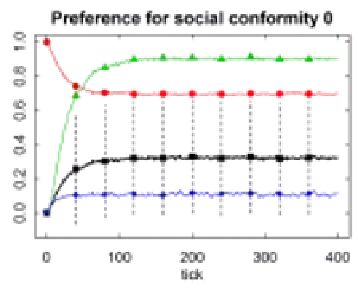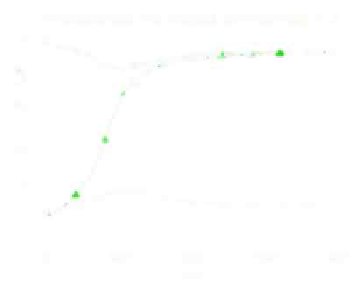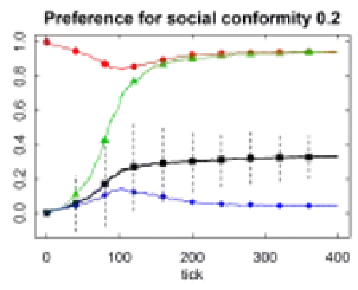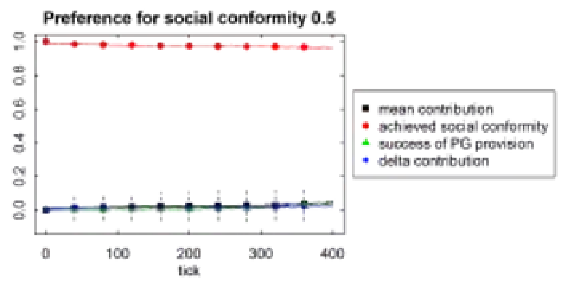Information Technology Reference
In-Depth Information
display simulation results for
socialConformityPreference
=0 which reflects the ex-
treme case where social networks have no influence in the decision process. In the
aggregated simulation results discussed above we find that for a medium setting for
the importance of social conformity (
socialConformityPreference
=0.2) success of the
PG provision and the achieved social conformity have their maxima. Therefore, we
pick this setting for a second in-depth analysis that is shown in the second diagram of
Fig. 1. Finally, we show results for the extreme case of
socialConformityPrefer-
ence
=0.5.
Fig. 1.
Temporal dynamics for altruistic agents and different preferences for social conformity.
We show mean values of 20 runs performed per simulation tick. See text for further explana-
tion. Adapted from [1].
In all three diagrams of Fig. 1, due to the homogeneous initialisation of the agents
with zero contributions, the social conformity perceived by the agents starts on the
maximum level during the initial simulation steps. If the preference for social con-
formity is high this passive social norm is sustained throughout the simulation and
social mobilisation does not take place. For more moderate preferences for social
conformity we observe successful social mobilisation. In both cases the achieved
social conformity drops during the initial phase of social mobilisation. For the first
case (preference for social conformity 0) the maximum success of PG provision is






